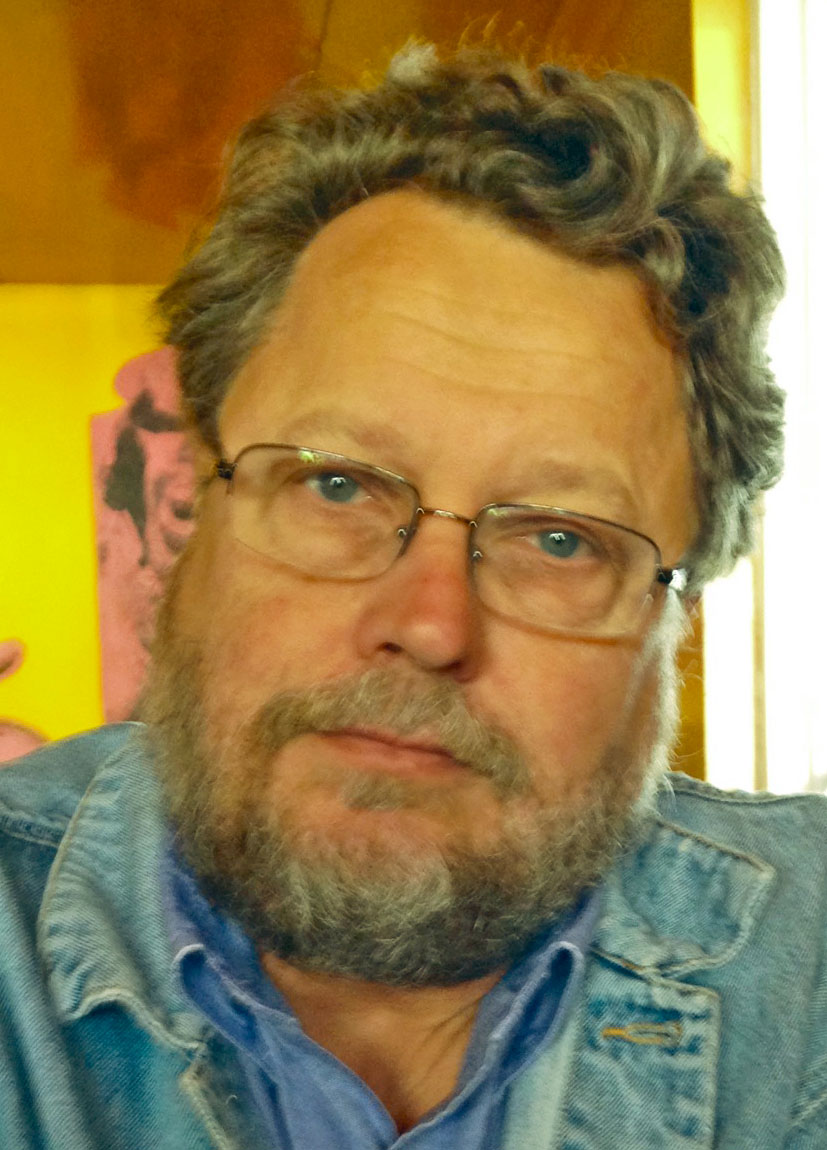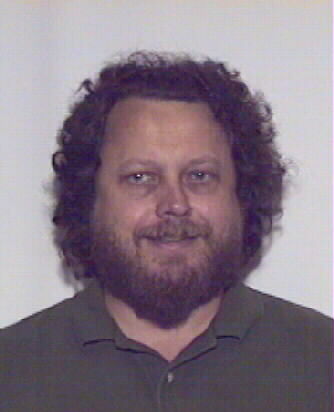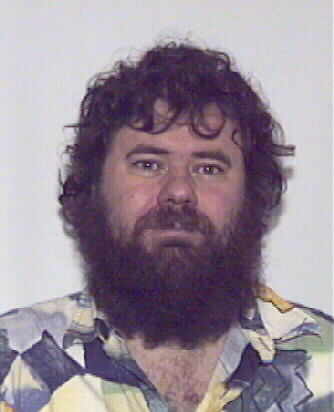
Professor of Economics
B.S., Caltech, 1974.
Ph.D., University of
Minnesota, 1979.
It is difficult to give a consensus of informed opinion because,
although there is much informed opinion,
there is rather little consensus.
—David Colquhoun, Lectures on Biostatistics, 1971.
| Phone: | (626) 395-4218 | Postal Address: |
| Fax: | (626) 792-6684 |
Division of the Humanities and Social Sciences MC 228-77 California Institute of Technology Pasadena, CA 91125 |
| E-mail: | kcborder@caltech.edu | |
| Office: | 205 Baxter Hall | |
| Assistant: | Barbara Estrada, 111 Baxter, (626) 395-4083 |
Download my vcard:
|
| Ec 121a web site | Ma 3/103 web site |
| Ec 140 web site | Ma 3/103 auxiliary web site |
| Ec 181 web site | |
| Additional notes on selected topics in mathematical economics | |
Some of this material is only available via the Caltech network.
"It left me more confused, but in a good way."—unsolicited comment on the Hitchhiker's Guide, from Ben Gillen (UCSD, economics).
Roko Aliprantis and I finally released the new and improved third and final edition of Infinite Dimensional Analysis: A Hitchhiker's Guide, published by Springer (ISBN 3-540-29586-0). Now available in a paperback people's edition. There is a very flattering review of the first edition on Amazon.com. The reviewer is neither on my payroll nor a co-author.
Or be the first on your block to own a copy of Fixed Point Theorems with Applications to Economics and Game Theory, published by Cambridge University Press.
My mentor Ket Richter convinced me that I ought to put the errata for these books on the web.
Come back later for updated errata. I'm sure there are still some waiting to be discovered.
These are a few of the books that I have enjoyed recently.
It is hard for someone from The East or The Bay Area, or even La Cañada Flintridge, to understand this, but I love L.A. While I no longer live in Los Angeles, and now live in Pasadena, L.A. is still a terrific city.
Contrary to what you might think, L.A. is not a crime ridden slum. That is a rumor we perpetuate to keep out the riffraff.
In 1999, Los Angeles had an overall crime rate 50% lower than Seattle, 47% lower than Minneapolis, 66% lower than Atlanta (no surprise there), and significantly lower than say Houston, Dallas, Denver, Phoenix, Toledo, Kansas City, Portland, Columbus, or Boston, to name a few.
Source: U.S. Census Bureau, Statistical Abstract of the United States: 2001, Table 294: 1999 Crime Rates, by Type-Selected Large Cities.
For violent crimes, in 2005 (the latest reported year) Los Angeles had a murder rate 50% lower than Philadelphia or Cincinnati, 40% lower than Atlanta, 38% lower than Milwaukee, a third lower than Pittsburgh, and 19% lower than Chicago. (And those are not the leaders by any means.) The overall violent crime rate was 49% lower than Nashville, 43% lower than Minneapolis, 37% lower than Boston, 34% lower than Dallas, and 30% lower than Charlotte. It's even lower than St. Paul or Fresno. Of course it's lower than the really violent cities such as Detroit, Baltimore, Saint Louis, Kansas City, Cleveland, Philadelphia, Atlanta, Miami, or Memphis.
Source: U.S. Census Bureau, Statistical Abstract of the United States: 2008, Table 302. Crime Rates by Type-Selected Large Cities: 2005.
Los Angeles has a median household income higher than Chicago, Denver, Dallas, Houston, Omaha, Boston, Phoenix, and Minneapolis. To be fair, I should point out that Anchorage has a higher median income.
Source: U.S. Census Bureau, Statistical Abstract of the United States: 2008, Table 686.
Then of course there is the weather. Because of the interest in global warming, I report two sets of figures. The first is the 30-year average for 1961-1990, and the second is the average for 1971-2000.
The average July high temperature in Los Angeles is 75.3°/75.2° (Fahrenheit). This is cooler than Houston (92.7°/93.6°), Denver (88.2°/88.0°), New York (85.2°/84.2°), Minneapolis-St. Paul (84.0°/83.3°), Boston (81.8°/82.2°), and (recently) Seattle-Tacoma (75.2°/75.3°).
On the other end, the average January low in Los Angeles is 47.8°/48.6°, which is warmer than Minneapolis-St. Paul (2.8°/4.3°), Denver (16.1°/15.2°), Boston (21.6°/22.1°), New York (25.3°/26.2°), and Seattle-Tacoma (35.2°/35.9°). (At least the last one is above freezing, barely.)
Source: U.S. Census Bureau, Statistical Abstract of the United States: 2001, Table 371 and 2008, Table 377.
There is more to weather than temperature. There is also precipitation. We get an average of 12.0/13.15 inches of rain per year. Compare that to the average precipitation in Atlanta (50.8/50.20), Houston (46.0/47.84), Boston (41.5/42.53), Seattle (37.2/37.07), Chicago (35.8/36.27), or Minneapolis (28.3/29.41). Of course for most of these cities it's not all rain. Much of it is snow (more on snow).
Source: U.S. Census Bureau, Statistical Abstract of the United States: 2001, Table 374 and 2008, Table 380.
In 1781 the governor of Alta California created a new settlement, El Pueblo de Nuestra Señora la Reina de Los Angeles del Rio Porciúncula, on the plain below the mission of San Gabriel. Land in the new settlement was awarded to a multiethnic group of veterans of the war for independence from Spain. Here is a little more on the early history. There is more at Wikipedia.
I lived on what used to be an oil field lying on the northeast edge of the geological formation that includes the La Brea Tar Pits. During the summer, tar would ooze to the surface on the sidewalk next door, with methane bubbling through it. Unwary small children and old people would then track this tar all over the neighborhood. I am told the city has included the area in a methane hazard district, but Caltech geologists assure me that the danger of an explosion is nil unless you have an unventilated basement. (An unheard of amenity in Southern California residences.) Update: The tar seepage has stopped.
You get a nice aerial view of my old block in one of the early scenes of Unlawful Entry. (My old house is the one without a pool.) The area is old by the standards of L.A., with most of the houses built between 1922 and 1924. Here is a sequence of maps showing where I used to live. (In 1995, this was really cool.)
My old neighborhood comprises two-block lengths of three streets, surrounded by minor arteries and a private golf course, of which I am not a member. It is a real neighborhood, where I could walk to the market, bank, restaurants, and movies;htere are Fourth of July block parties; and I knew my neighbors. (I knew many more of my neighbors than when I lived in either Minneapolis or St. Paul. On my block lived Al, Alex, Anne, Betty, Bill, Bobby, Carolyn, Chris, Connie, David, Elizabeth, Ellen, Frances, Greg, Henry, Joe, John, Joyce, Julie, Keith, Linda, Liz, Mariko, Mark, Melissa, Mike, Pat, Paul, Percival, Philip, Rob, Robert, Rodolfo, Sandy, Sloan, Steve, Susan, Susie, and Wayne, among others, not including children.) On Halloween, the few people who have moved out of the neighborhood to nearby areas return to go trick or treating in their old haunts. I lived in my house for over twenty-five years, but my former neighbors for two houses on either side are still the same as when I moved in. Some people live in the houses their parents owned and in which they grew up. (One of the side effects of 1978's Proposition 13 is that it increases the cost of moving by eliminating your artificially low property tax valuations if you move.)
Some of my former neighbors work in The Industry, that is, they produce, write, direct, litigate, and act in movies and TV, and generally corrupt the public morals. You would recognize some of them on sight and have probably seen the work of many more. (Out of respect for their privacy, I won't mention names, but at least ten are listed on this site.) Other former neighbors were Real Americans, such as firefighters, sheriff's deputies, ministers, accountants, Boy Scout leaders, small factory owners, court reporters, veterinarians, university professors, engineers, hairdressers, librarians, limo drivers, massage therapists, attorneys, physicians, public and private schoolteachers, psychotherapists, and slackers. A dwindling number are retirees.
My son graduated North Hollywood High School, a public school in the Los Angeles Unified School District and subsequently graduated Wesleyan University. Another of his former schools, Walter Reed Middle School, was used for the exterior shots of the middle school for the TV series 7th Heaven. Seems like everyone wants to be in pictures. On another note, the school was also used as a stand-in for the Walter Reed Medical Center in the video backdrop of John McCain's acceptance speech at the 2008 Republican National Convention.
Kim Basinger's house in L.A. Confidential is just around the corner, but sadly she doesn't really live there. The house used for the exteriors of Happy Days is six doors up the street, in case you ever wondered why there are palm trees in Milwaukee. I would take my MINI to our trusty neighborhood mechanics at Pinky's Automotive. Close by are The Brothers Collateral (pawnbrokers to the stars), the Iglesia de Dios Camino de Santidad, and the Spotlight Tattoo Parlor. Paramount Studio's famous Melrose Gate (remember Sunset Boulevard, the movie) is eight blocks away. Larchmont Village, a local shopping block with diagonal parking, a barber shop, and a five and dime, is an easy six block walk away. Despite Larchmont's small-town feel, I've occasionally found myself in a restaurant seated next to a celebrity, such as Ben Stiller, Tony Shalhoub, or William Peterson. One of my biggest thrills was running into the then little-known Heather Graham at the ice cream shop while she was (briefly) on Twin Peaks (1991).
Most mornings on my way to the office I would stop off at Caffé Etc. Hollywood for a small latté. The caffé has recently been the subject of a reality video.
On Sunday mornings, the Hollywood Farmers' Market meets about a mile up the street. It features excellent produce, including the best Seascape and Gaviota strawberries, wonderful haricots verts, fantastic sourdough bread from Jack Bezian, marvelous fish from Marilyn of J & P West Coast Seafood, and live music ranging from Hisao Shinagawa to the Fair Market Band to the jazz trio of Carl Tassi, Cengiz Yaltkaya, and Morrow Fleet. I would almost always meet some neighbor shopping there, and occasionally another Caltech faculty member who had made the trek from Pasadena or somewhere nearer.
Incidentally, I am aware of the controversy over eating fish, see, for instance, this piece in The Economist.
The Los Angeles County Museum of Art and the Petersen Automotive Museum are about three miles away. The 18,000-seat Hollywood Bowl, the nation's largest natural amphitheater, is two and a half miles away.
Griffith Park is the nation's largest municipal park and urban wilderness area. It comprises 4100 acres of steep hillsides covered with sage and manzanita, springs, and a natural creek. For comparison, The Regent's Park in London is 410 acres, New York City's Central Park covers 843 acres, and the Bois de Boulogne in Paris covers 2137 acres (865 hectares). The park is about two miles away at its nearest point, though the good hiking is a bit further.
Real live rattlesnakes and coyotes live there, and according to the Times of April 29, 2004, a mountain lion was living there. (The California Department of Fish and Game reports that mountain lions have killed two people in Southern California since 1910.) The Beverly Press reported on April 24, 2014, (p. 3) that a lion, named P 22, has been living in the park since 2012. It had been treated the previous month for the effects of rat poison. It is hypothesized that it had eaten a coyote that had been dining on poisoned rodents.
You don't have to go to Griffith Park to get close to wildlife. Once, I was walking home from dinner at Xiomara around 8:00 p.m. and saw a family of four raccoons crossing the four lanes of Melrose Avenue. They then proceeded up the street, scurrying one at a time from under one parked car to another. Another time I almost tripped over a coyote in the parking lot of Yamashiro, a Hollywood restaurant. I have had a heron land in my backyard, an owl in my neighbor's yard, and I have been buzzed by a duck (teal) that landed in my neighbor's front yard. This happened after my other neighbor's cat, Vlad, tried to sneak up behind him. I have walked past a red-tailed hawk perched on a parked car three doors down from my house, and more recently had one walking around my front lawn. And of course my old back yard is home to squirrels, tree rats, tree frogs, and lizards, and is visited by the occasional wandering opossum. One night, my black Labrador proudly retrieved a juvenile opossum from the back yard and brought it to me in the den. With a little coaxing, she dropped it on the floor and I took it out to the front yard. Half an hour later it had wandered off.
Coyotes had been sighted in the neighborhood a few years ago, which caused much concern among owners of small pets. The city responded with a meeting on coyote encounters.
One downside of this abundance of urban wildlife is noise. The springs of '08 and '09 were alive with the sounds of frogs at all hours of the day and night. The summer of '08 brought a pair (or more) of urban mockingbirds who never seemed to sleep. They learned to imitate my alarm clock as well as several different models of car alarms. They love to practice these calls from about 1:00 a.m. to 4:30 a.m.
Here are some Angelenos on the street.
Some of us pay extra for street lighting.
But life in L.A. can be tough on some people. Here is our former mayor, Richard Riordan.
Disclaimer: The city is constantly changing and I don't have time to keep this page in sync with it. The information here was valid when I wrote it, but the world may have changed since then.
My former colleague Simon Wilkie is an internationally recognized scholar with extensive experience in the communications industry, and past Chairman of the Department of Economics at the University of Southern California. Nevertheless, people sometimes used to confuse us, so here are our old official Caltech ID photos. As you can see, we look nothing alike.
 |
 |
| Yours truly | Simon Wilkie |
Through the internet I have been contacted by three fourth cousins I never knew I had. (By the way, you have changed your email addresses-please send me your new ones.) The 2000 Census lists 2180 people in the U.S. population with the surname "Border" (which is the 12,900th most common on their list). One of my great-great-great-great-grandfathers on my father's side, the family namesake, was Sebald Bäder, also known as Border, a gunsmith from the Palatine who settled in Fredericksburg, Maryland around 1760. He was married to Regina, maiden name unknown. Another great-great-great-great-grandfather (on my mother's side), George Lohr, probably came to Baltimore from the Palatine in 1750 or 1754 on a ship from Rotterdam. (My sister has found three manifests with George Lohr, two in 1750, one in 1754. One of my long lost cousins informs me that he made two trips.) (The Census Bureau reports 6506 people named Lohr, ranking 4962.) Another pair of great-great-great-great-grandparents on my mother's side comprised Michael Wolford (10,738, rank: 3096) and Anna Maria Baker (413,351, rank: 38) , who were also living in Pennsylvania before the revolution. Other, less distant, family names that I know include Custer (but pronounced with a long u) (10,684, rank: 3110), Stambach (184, rank: 92,601), and Lape (2407, rank: 11,910).
MathJax trivially and freely lets you use
N.B. You must indicate inline equations with backslashed parentheses, not single dollar signs.
Here are some interesting sites not mentioned above.
In 1995, this section seemed like a good idea.